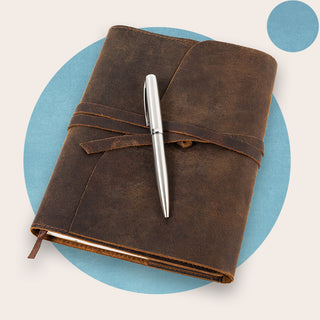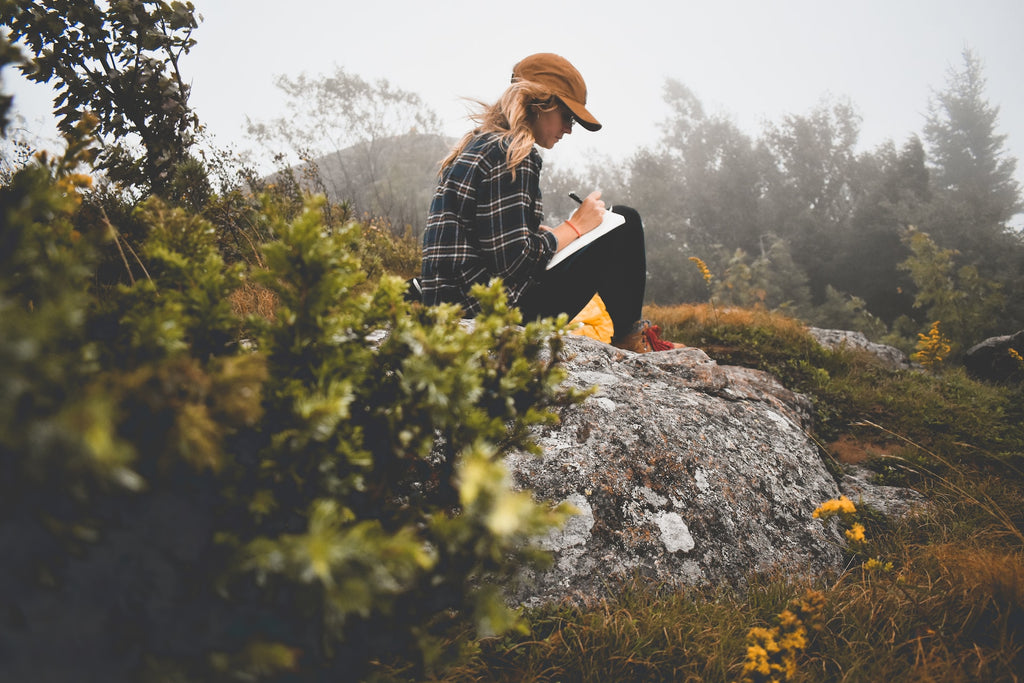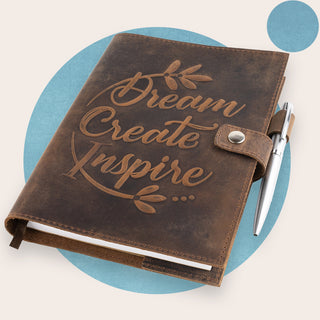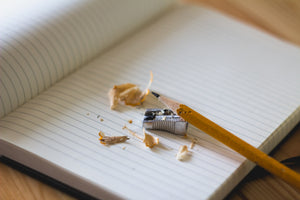Are you looking to make your start in the world of journaling but do know not where to look? Have you just bought a fancy new journal but lack the journaling techniques to fill it? Are you simply looking to get to know the world of journaling a little better?
Then step forth as we explore 10 of the most powerful journaling techniques that you might use for your own journalistic investigations into the world and the self.

What are Journaling Techniques?
Journaling techniques are the techniques by which you might go about journaling. Seeing as journaling essentially involves the use of paper, pencil, and mind, there are limitless variations on what journaling can do and what it means to each individual person.
Thus, you can find a technique for just about anything you desire, including the investigation of dreams, the striking of a balance between work and life, and even art therapy. Below are some of the best.
1. Bullet Journaling
Those who have spent time on this website should know how highly bullet journaling is praised here. As a concept, this is likely the single most important method of journaling of our times, for it allows each user to strike a balance between work and play.
This is something that grows ever more important, especially in a world where the boundaries between these two things are becoming more fluid and difficult to define concretely than ever before. This is thanks to the after-effects of COVID-19 and the way it has encouraged the development across the board of hybrid workflows within a working environment.
2. Gratitude Journaling
Creating a gratitude journal is another of the foremost methodologies for journaling. As a journaling technique, there is little better for some people than simply offering a gratitude journal forum within which to detail the things that people are thankful for.
Plenty of research has been performed to suggest that doing so regularly can actually improve mental health. Indeed, something as simple as cataloging and detailing to varying degrees the things for which you are thankful can go a long way in helping you to achieve greatness by unclogging your mental pathways.
3. Art Journaling
If you are the kind of person who is likely to twist and turn themselves through various mind games before getting to the truth of the matter, then perhaps art journaling will be more useful for your purposes.
Common advice in this sector is that, contrary to popular belief, you do not have to be an artist or even an aspiring artist to benefit from art journaling. Rather, it can be used both as a form of visual therapy and art therapy, and, again contrary to popular belief, this can have more similarities to writing journals than you ever realized.
4. Free Writing
Much as the title suggests, free writing is a form of journaling where-in the user writes freely. This can extend any way you like, though should usually involve the user writing non-stop and without inhibition for a selected period of time, though the topic and style of writing can vary depending on your tastes and desires.
This is something that many have struggled with in the past, the fact that there is simply too much freedom daunting to even the bravest. Indeed, many will surely testify just how overwhelming such freedom can be to the point that it drives us inward.
5. Morning Pages
As with free writing above, morning pages are a similar methodology in that you can write whatever you want. The obvious difference here is that where you might engage with free writing at just about any time of day, morning pages are intended for the morning.
Contrary to a bullet journal, the idea here is to wake up and start writing without doing anything else (that includes checking email and social media). It is hoped that in this more vulnerable and less guarded state, you can discover more about yourself than you might otherwise be willing to give away when you have achieved full consciousness.
6. Unsent Letter
This journaling practice will no doubt appeal to those with an inclination toward the more antiquated enterprises of the West. As with most other types of journaling, the clue is very much in the name. After all, the idea of journaling is to make clear something that was previously unclear or otherwise bothering you.
An unsent letter, then, is one that you write to someone (even yourself) but that you do not actually send. In the knowledge that it will never reach its recipient, the idea is that you can organize and collect your thoughts and feelings in a way that is unfiltered and truer to life.
7. Dream Journaling
If you are the kind of person that is constantly fascinated by their dreams - i.e. what they mean, what they look like, and how they make you feel - then perhaps this style is for you.
Even if you can't record your dreams with words - lord knows consciousness writing can opaque a dream even more than it already was - then you can always try visual journaling to capture the seemingly uncapturable. Just take a blank page and run wild trying to visualize how the dream looked and how it made you feel.
8. Travel Journal
If you are the kind of person that thrives on visiting other places or simply enjoys the feeling of being in motion, then why not freeze your thoughts and feelings in time with a bout of travel journaling?
Again, you can even make this visual as well if you are wanting to remember the visual feel of a place or time without relying on photography. A vision board is great for this sort of thing. You might even take it a step further with some worst-case scenario journaling if you are the kind of person that worries all the time they are away.

9. Lists
You can scarcely go wrong with a whole bunch of lists to categorize and catalog all of your commitments, in the past and in the future. Remember there is no right or wrong way to go about journaling, so whether you prefer simply to get started or whether you prefer to incorporate your lists into a monthly or weekly calendar, you are doing right by yourself.
Heck, you can even try mixing some of the styles above and make a list in a stream-of-consciousness mode.
10. Reflective Journaling
Finally, in summation of all the aforementioned techniques, we have a technique that seeks to take time in allowing you to reflect on all that has come before and that will soon be.
The focus of such journaling can be just about anything. Much as with psychedelic drugs, it is best to use this as a tool for the unraveling of something that you are otherwise unable to unravel. If done right - i.e. in a way that honors your needs, wants, and desires - this can be a powerful technique and should be approached with at least an air of caution.

Final Words
So, there you have it! Hopefully, you have come away from this exercise today with at least one technique to try at home for yourself.
FAQs Journaling Techniques
WHAT ARE JOURNALING TECHNIQUES?
Journaling techniques are the techniques by which you might go about journaling. Seeing as journaling essentially involves the use of paper, pen/cil, and mind, there are limitless variations on what journaling can do and what it means to each individual person. Thus, you can find a technique for just about anything you desire, including the investigation of dreams, the striking of a balance between work and life, and even art therapy.
WHAT IS THE MOST EFFECTIVE WAY TO JOURNAL?
This will very much depend on the intention behind the initial call to journaling. If your intention is to catalog your dreams, then you will want to engage in a dream journal, whether this ends up being a journal focused more on the visual or the literary. If, though, you are looking to strike a balance between your work life and your home life, then using a bullet journal could be an apt way to go about it, especially in a new world of hybrid workflows and fluidity in the workplace.
HOW TO DO JOURNALING FOR BEGINNERS?
The most important thing for anyone who is looking to start a journal is to define the intention of the journal in the first place. It is okay if the journal strays from this initial intention, but it is still good to know roughly in which direction you are headed so that you can use a style of journaling that is right for your specific purposes. If these purposes are, for example, more therapeutic, then you might want to try using a visual journal or an art journal in order to visually therapize yourself.



